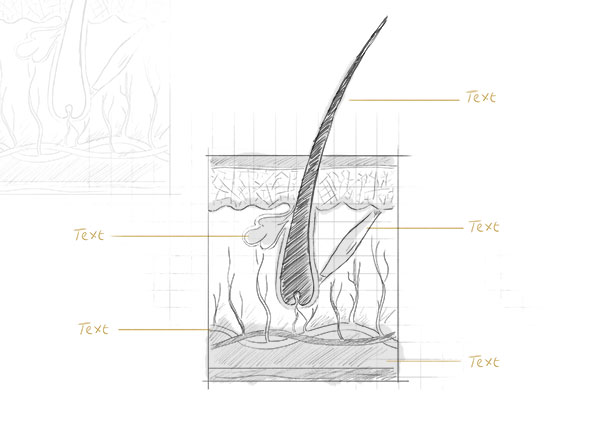Hair grows everywhere on your body apart from your lips, palms of your hands and soles of your feet. Your scalp is the most prolific area for hair growth and typically contains about 100,000 hair follicles.
Each hair follicle is independent and is in a constant cycle of growth, rest, and renewal. This is known as the hair growth cycle and there are three stages: anagen, catagen and telogen.

Anagen is the first stage and is known as the growth phase. It lasts roughly 2-6 years and during this time your hair will grow on average 1cm per month. The longer your hair stays in this phase the longer it will grow, this is down to genetics. At any given time 90%of your hair is in this stage.
Catagen is the second stage and is known as the transitional or resting phase. In preparation for the final stage of the hair growth cycle the hair follicle starts to shrink and detach itself from its blood supply. This stage lasts roughly 2 weeks.
The third and final stage is telogen which is known as the shedding phase. This phase lasts for a period of 1-4 months during which time the follicles remain dormant. When it is time for the new hair to come through the old hair detaches from the root and is shed. Roughly 10%of your hair is in this stage and explains why it is normal to lose up to 100 hairs per day.
Whilst your hair is progressing through the hair growth cycle there is no evidence of of hair loss, as the hair which is shed is being constantly renewed. Noticeable hair loss only occurs when either the growth cycle is disrupted or when the follicle itself is damaged.
There are many causes of hair loss in both men and women, but the most common cause by far is androgenetic alopecia a.k.a. male pattern baldness or female pattern hair loss.
If you are thinking of treating your hair loss it is important to remember the key to effective treatment is in the diagnosis.
An experienced physician will always perform a through history and examination before discussing your treatment options. These can be split in to surgical and non-surgical.



